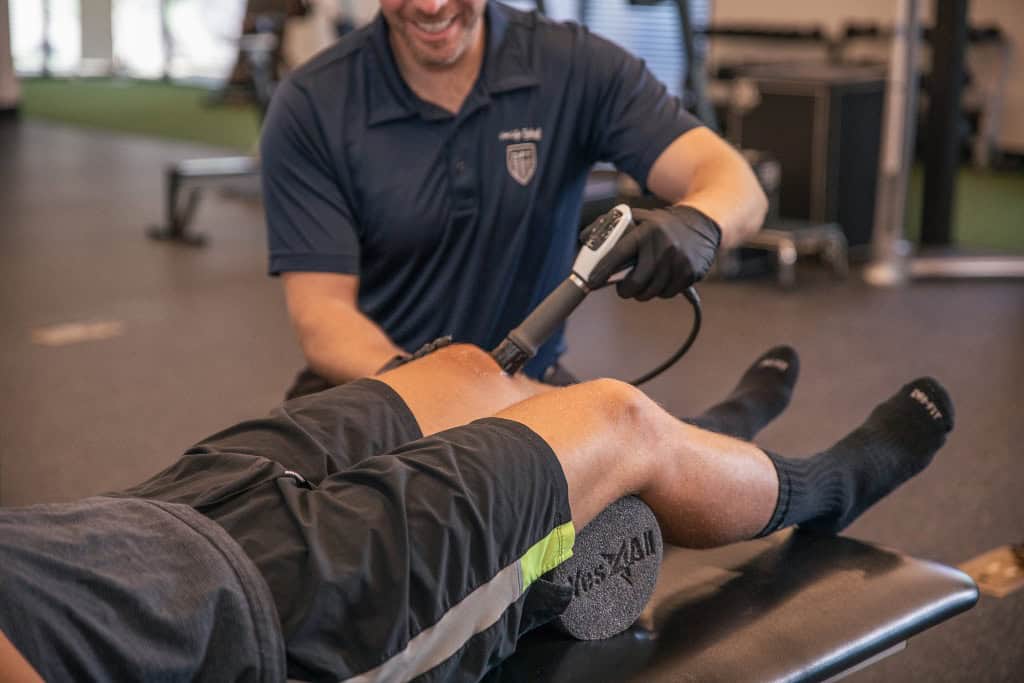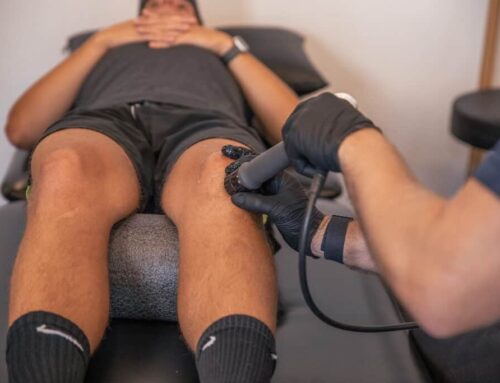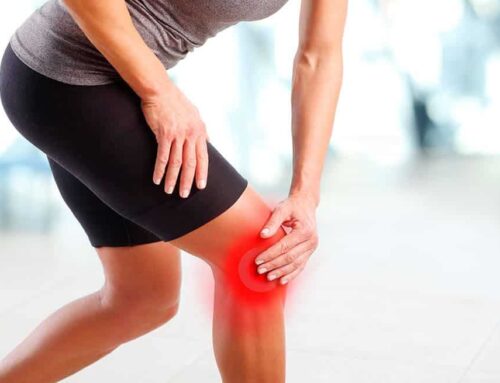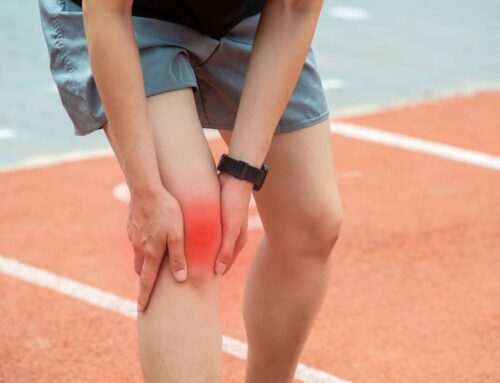Knee pain is frustrating to live with. From days full of pain and stiffness to your knee reminding you it’s hurt every time you get up from a chair and start walking. Feeling limited in your life because of patellofemoral pain can make you feel like you never get a break. Every time you think it’s getting a little better, you get that familiar catch or snag.
Maybe you’ve tried some of the usual suspects like heat packs, massages, and even injections to get on top of your knee pain, all without much success. What’s worse? Traditional physical therapy treatments like stretching or massage for patellofemoral pain really don’t work that well or lead to lasting relief.
So, what are you supposed to do about the knee pain that’s holding you back?
Luckily new innovations in patellofemoral pain treatment are making physical therapy a viable option for getting pain relief, building up your confidence, and enjoying your life with fewer limitations. Let’s take a closer look.
What is Patellofemoral Pain?
Patellofemoral pain, also called patellofemoral pain syndrome (PFPS), describes pain along the front of your knee and your kneecap. Even though the definition is simple enough, it can be very hard to beat for most people.
Most commonly patellofemoral pain develops because of excess stress on the front of your knee. While most people attribute excess knee stress to things like starting a new sport or pushing yourself harder than you’re used to, it’s less about how much you move and more about how you move.
Unhealthy movement patterns in your brain lead to uneven stress in your hips, knee, and ankles that adds up over time. Combined with muscle imbalances that develop and further solidify unsound movement patterns, dysfunctional knee mechanics can start to feel like second nature that’s hard to unlearn. In fact, most people who are learning how to correct their unhealthy movement patterns will tell you that it feels like they’re moving wrong at first.
Once patellofemoral pain develops, it tends to stick around for a while. That’s because your knee is under constant stress during most of your normal activities, like standing, walking, and using stairs. With faulty mechanics putting more stress in your knee and less downtime overall during a normal day, it’s especially hard for your knee to recover from stubborn patellofemoral pain.
Where most people see long-term challenges from their patellofemoral pain is from not doing physical therapy early on, which increases the chances of complications and persistent pain. To make matters worse, the physical therapy most people do get for their patellofemoral pain isn’t actually helping as much as it should. But why?
Where Physical Therapy for Patellofemoral Pain Goes Wrong
Traditionally, physical therapy is a straightforward treatment for knee pain that can be easily prescribed by your doctor and gets consistently okay results. However, the traditional physical therapy model goes wrong in a few key areas.
- It’s not individualized – More often than not, traditional physical therapy is seen as a specific list of exercises and education that will apply to everyone. Unfortunately, this approach usually falls flat and leads most patients feeling unseen by their physical therapist.
- It’s not modernized – Although technology and treatment approaches have come a long way in the past decade, most physical therapy clinics are still holding on to their old ways because it’s the way they’ve always done things. This ultimately puts you in a lackluster care plan that isn’t taking advantage of modern knee pain treatments.
- It doesn’t fix anything – While traditional physical therapy can work decently well for the right person with patellofemoral pain, most of the one-size-fits-all and antiquated treatment models only get temporary relief, not lasting relief that truly fixes the root causes of your knee pain.
But it’s not all bad. Without traditional physical therapy, we wouldn’t have the building blocks that have helped create better treatment approaches for patellofemoral pain.
Movement Training for Patellofemoral Pain: A New Paradigm
As traditional physical therapy treatments for patellofemoral pain begin to fade into the past, a new gold standard is taking the stage: movement training.
In short, movement training for patellofemoral pain is a physical therapy treatment approach delivered by knee pain specialists that revolutionizes your care plan in two big ways.
Challenging Movement Patterns in Your Brain
When it comes to patellofemoral pain, few things are as important as the way that your body moves. The movement patterns you default to in your hips, knee, and ankles determine how much stress you’ll take on during activity, and where.
Movement training from a specialist starts with challenging the movement patterns in your brain that aren’t serving you, replacing them with healthy ones, and reinforcing those new movement patterns to better accommodate your knees during everyday life.
Replacing Outdated Beliefs
If movement patterns are how you move, then beliefs are how you think. More often than not, outdated beliefs about your knee pain can be what stops you from making positive changes in your movement patterns. For example, believing that you can’t or shouldn’t move a certain way for fear of damaging your knee can stop you from doing what you actually need to do in order to make it better.
A movement training specialist can help bring your outdated beliefs to the surface, help you question them, and then help you overwrite them by showing you how to move and exercise in new ways that address the root causes of your knee pain.
At DPT, our knee pain specialists use movement training to help our clients uncover the true causes of their patellofemoral pain and finally get results where traditional physical therapy approaches didn’t work.
*Schedule a consultation with one of our specialists*
Making Recovery from Patellofemoral Pain Last
You deserve the fastest and most effective treatment to beat your stubborn patellofemoral pain for good. While temporary relief from your knee pain can be helpful in the short term, lasting relief is key to a full recovery. This is done in a few key ways:
- Find The Root Cause – Most people start their physical therapy care plan without actually knowing what’s being treated in the first place. Finding the root cause of your patellofemoral pain early will set you up for success throughout your treatment plan.
- Build a Realistic Plan – Spending hours every week trying to complete a laundry list of exercises doesn’t work for most people, and you shouldn’t do it if you don’t need to. Building a plan that fits your lifestyle means more motivation and better results.
- Smart Progression – Knowing when and how to push yourself harder is an art form, and with the help of a knee pain specialist you can get the right guidance for progressing your care plan to the next level without causing harm.
It can be hard to hit on all of these key areas without help. Consulting with a knee pain expert is the most effective way to get the right care quickly.
How DPT is Helping People Recover from Patellofemoral Pain Better and Faster
Patellofemoral pain can be challenging to live with, making the right treatment, guidance, and support vital for getting lasting relief and staying active.
At DPT, our knee pain specialists are leaders in the treatment of patellofemoral pain and the issues that cause it. With thousands of success stories overcoming knee, hip, and ankle pain, you can count on our team to get you the relief and results you’ve been hoping for.
Moving beyond the traditional approach to physical therapy, our team uses movement training to find the root cause of your knee pain, promote neuroplastic change and improve how your brain moves your body, and replace outdated beliefs that aren’t serving you anymore. With a healthy movement mindset, you can move better and live without pain again.Ready to learn more about how DPT specialists can help you beat patellofemoral pain? Schedule a call with one of our experts to learn more!







